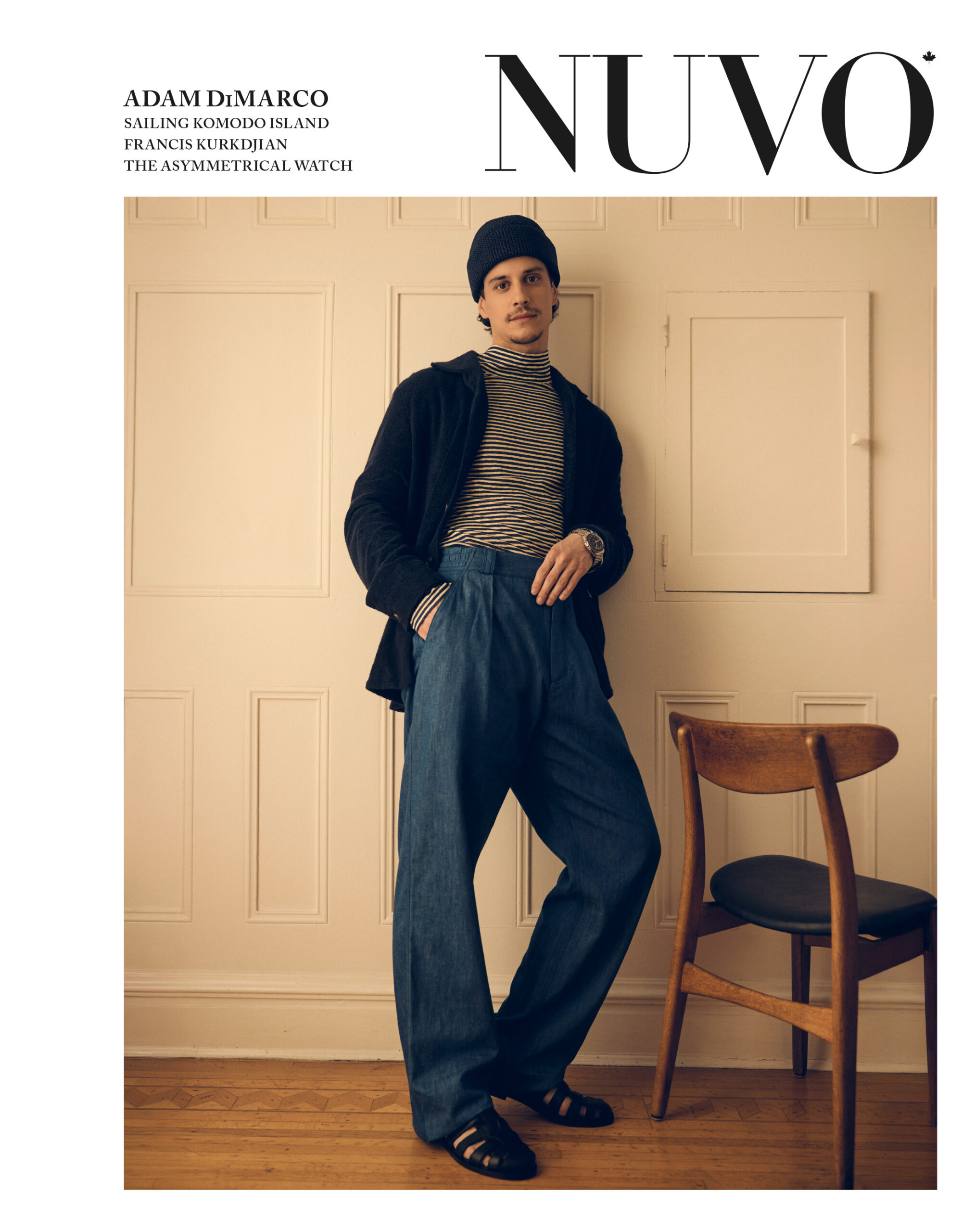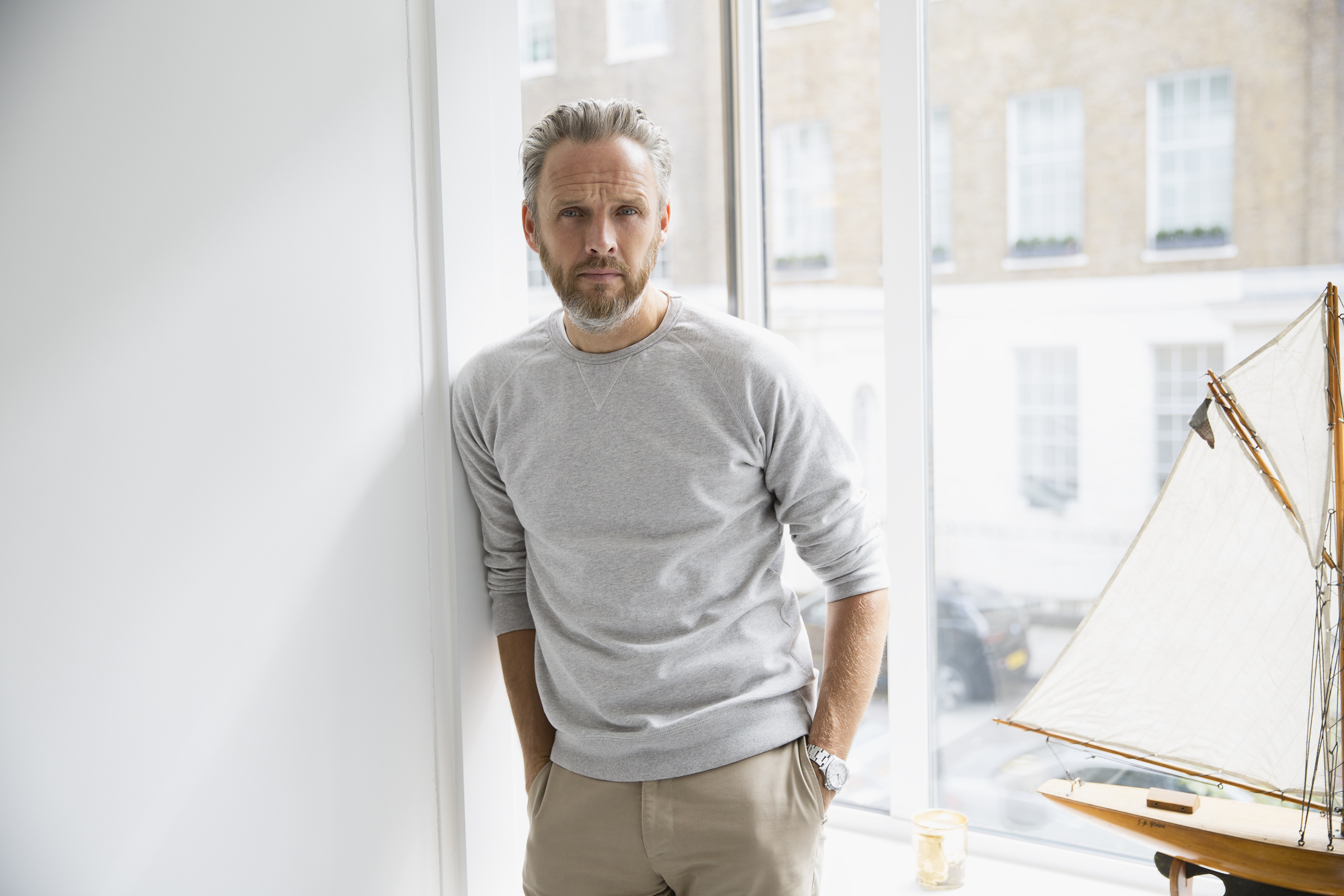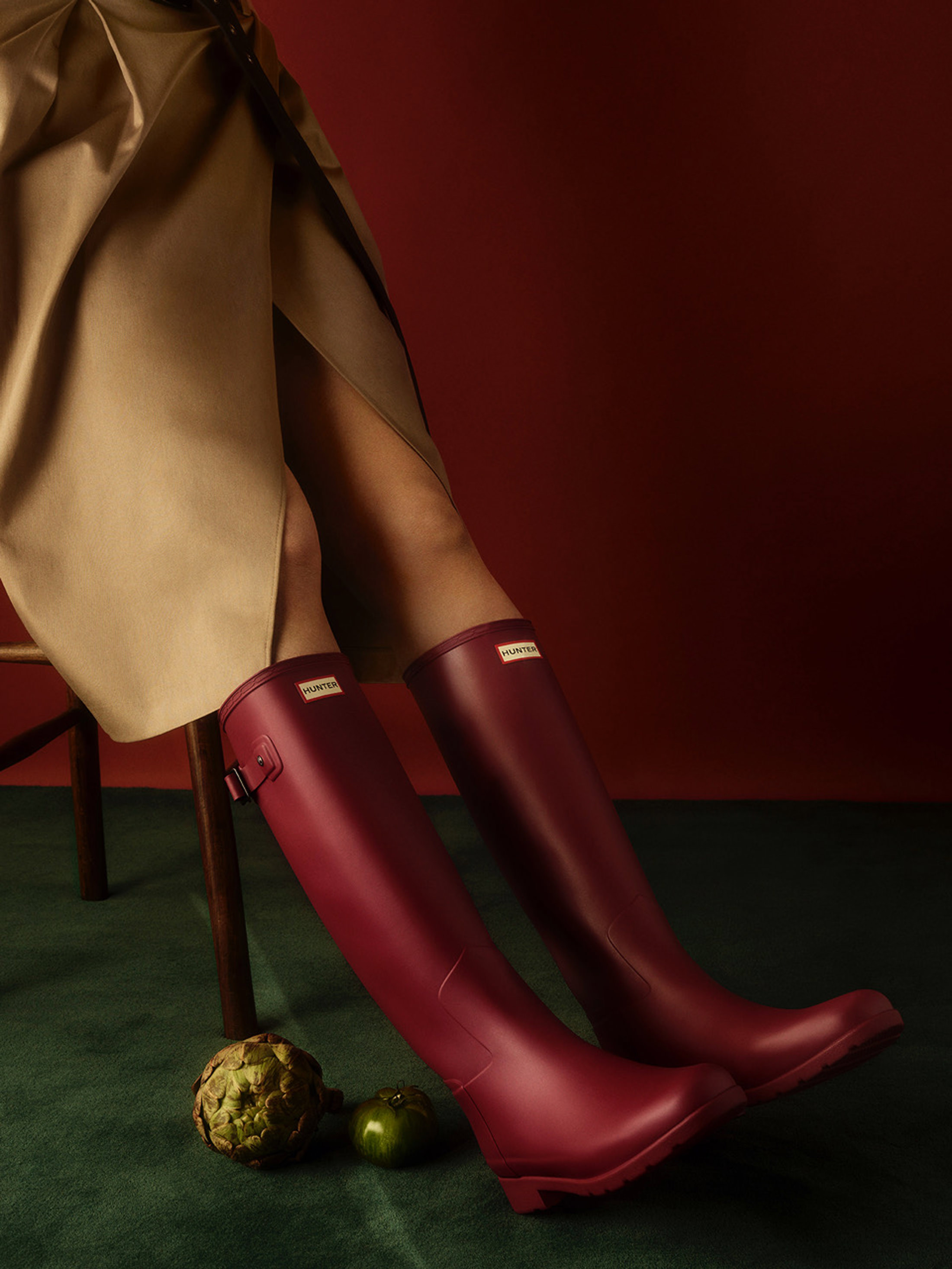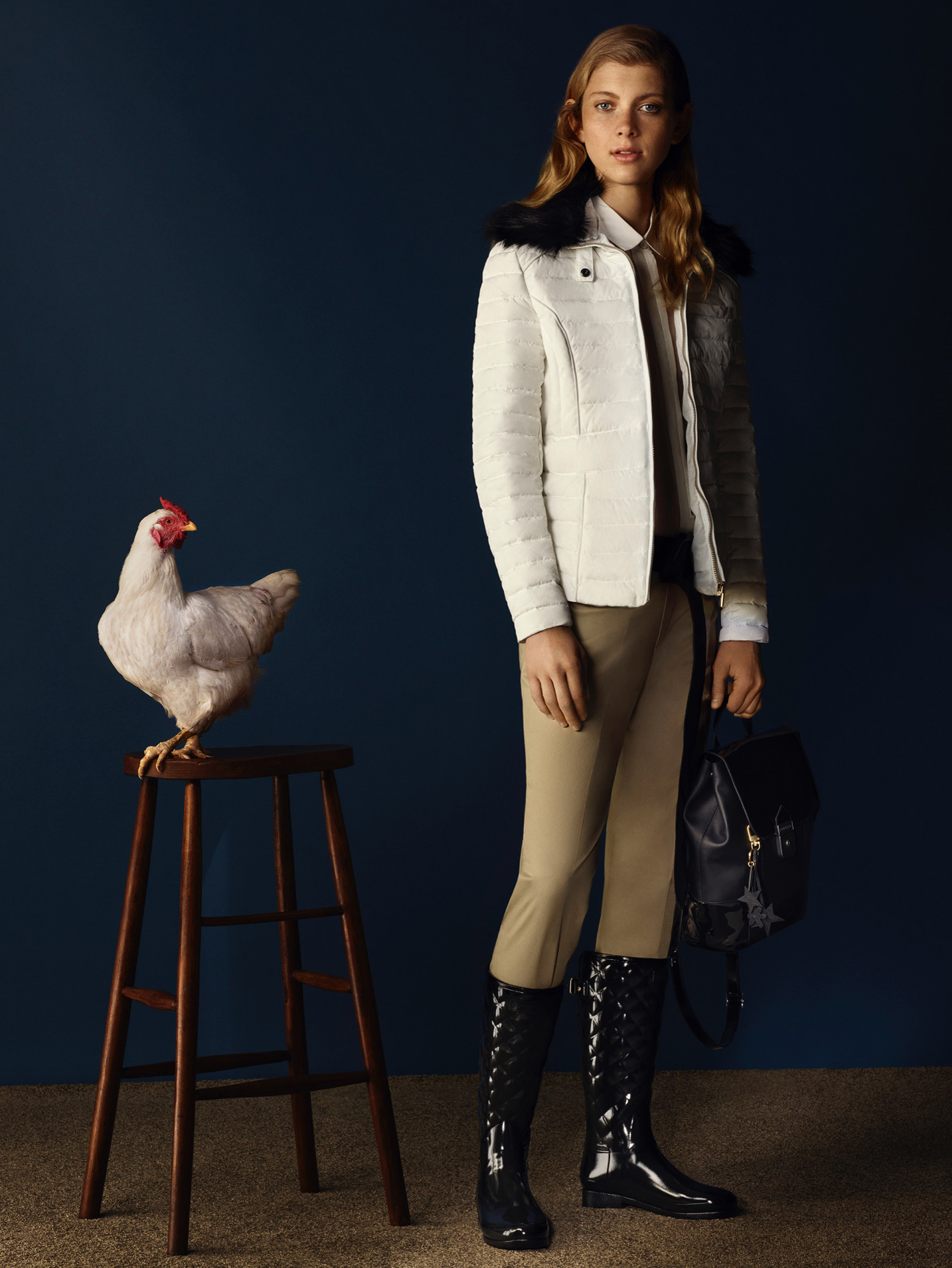Like its Regent Street store in London and its new store at Yorkdale in Toronto, the Hunter HQ in the British capital houses a barn-like structure, a nod to the brand’s birthplace in the Scottish Highlands. But it isn’t just any barn: this one, like those in the Hunter stores, has an architectural, contemporary feel, representing the intersection of the rural and the urban—a place that Alasdhair Willis has been painstakingly constructing since joining Hunter as creative director in 2013.
It’s not unusual to meet a creative director these days. Everyone from the prolific Instagrammer next door to the seasoned agency executive you sort of know has adopted the title. But the true mark of a creative director is the value they bring—for Willis, that has meant essentially turning Hunter around in just four years. It’s also rare to meet someone whose job so perfectly encapsulates their very essence of being. From his piercing, grey-blue eyes and perfectly groomed coif and beard to his cool, collected demeanour that’s confident yet never cocksure, Willis is the picture of what happens when you combine a fine eye for detail, a keen understanding of the power of brands and branding, and the charisma and influence to bring it all to life.
When Willis joined Hunter, the British brand was ready for the next chapter in its then–157-year history. Established in 1856 by American entrepreneur Henry Lee Norris, the company—then trading under the name the North British Rubber Company—started out producing rubber boots and other industrial items. Then, during the First World War, the mill manufactured over 1 million boots to keep the feet of soldiers in the trenches dry, and in 1956, the Original Green Wellington, now known as the Original Boot, was created. All that history hasn’t gone unnoticed, but for Willis in 2013, the appeal of the job lay in that sweet spot between balancing heritage with the opportunity he saw to solidify Hunter’s relevance in the 21st century.
“My remit as creative director is one thing; what I’ve actually been involved in is larger,” admits Willis from his light-filled office near Hyde Park. “The previous owners had a great opportunity with the Original Boot, but they didn’t have a long-term vision for the brand and they didn’t protect it, which really came back to bite us.” So, while sales figures may have been strong in the mid-2000s, they were starting to dwindle and, according to Willis, there was a lot of cleaning up to do by the time he joined. “I put together the initial strategic plan and what I felt the brand could be—which at that stage I didn’t even describe as a brand, but a business,” he recalls. “It was a single-product, Wellington boot business.”
Willis is the picture of what happens when you combine a fine eye for detail, a keen understanding of the power of brands and branding, and the charisma and influence to bring it all to life.
Enter Willis’s unique vision and expertise. The Yorkshire native studied fine art at the University College of London’s Slade School of Fine Art before entering the glossier world of advertising. In 1996, he partnered with Tyler Brûlé to co-found Wallpaper*, serving as publishing director until leaving to do various consulting, branding, and communication work of his own. His most famous client was David Beckham, though one might consider Christie’s, the BBC, Adidas, and the Richemont Group pretty high up that list too. (He continues to work with various international fashion and lifestyle brands on a consultancy basis.) “Brand strategy is a role and a service, I suppose, that I’ve provided for many brands, and there’s quite an expanse to the different businesses and industries I’ve touched with what I do,” Willis explains. “I’ve always enjoyed that I’ve never been seen as the ‘go-to fashion guy’ or the ‘go-to hospitality guy’ or whatever—it really is a shared skill set you apply to the industry that you’re in at the time.”
When he joined Hunter, Willis saw the brand’s distribution channels as one of its biggest challenges. With the popularity of the Original Boot had come a prolific grey market with plenty of unofficial retailers. In his first year, they started the cleanup job, “and while, let’s be honest, we’re still not completely there, we’re in a much, much healthier place where we can genuinely grow a brand and have sustainable growth,” he says.
By year two, Willis had introduced new brand categories: Hunter Original, which extended way, way beyond the Original Boot and into new footwear, outerwear, knitwear, and accessories categories, hosting four spectacular runway shows at London Fashion Week; and Hunter Field, a specialist performance collection of technical all-weather wear. It has since expanded Hunter Original even further into Core Concept, a seasonless collection of rainwear and, most recently, Refined, a more polished women’s collection.
And now, in year four, Willis is settling into the day-to-day, more typical responsibilities of a creative director. He oversees the PR and marketing teams, as well as “brand creative”, which encompasses every visual representation of the Hunter brand and products—always with the insight that can only come from having a holistic view of the entire business. “I find it pretty much impossible to be brought in to look at one thing because invariably, it’s never just one thing,” he explains. “The tentacles of that one element will spread into every part of the business, and you will have to engage in some level of cross-functional work and support to make anything happen.”
“I think the key to any successful heritage brand moving forward is the ability to retain that which is important, and be very happy and able to jettison that which isn’t.”
Willis recently hired Daniel Shaw as design director to lead the design of all collections within Hunter Original and Hunter Field, drawing on his experience at Christopher Raeburn. But Willis continues to brief the design team and work across all departments to achieve his vision for the brand—and its financial targets. “We’re living in a very commercially aggressive environment, but I think there is a way of doing both,” he says with trademark poise. “And we’re delivering, you know: the business continues to be successful and grow, but we’re doing things now with the right foundations.”
Indeed, it takes one type of confidence to successfully launch new categories for a stagnant brand; it takes another type altogether to release a new product in an already tried-and-true category. “In terms of design, what I did when I first came in was to think about how we build a design language,” Willis recalls. “It’s not like we can pull out archives—we’re not a Belstaff or a Barbour or a Burberry that has rich archives,” he continues. “We have a boot, a beautifully designed boot with a very strong typology within it, so what I did from day one was take the Original Boot, explode it into its 28 individual pieces, which are hand-assembled over three days, and then, with my design team, build a design language around those 28 pieces. And that language then starts to unfold within the apparel, the accessories, and the bags.”
In 2013, nearly 99 per cent of Hunter’s revenue came from the Original Boot, and primarily the black and green versions. Today, more than 15 per cent of the brand’s e-commerce sales come from non-footwear categories such as bags, accessories, and outerwear; in its Regent Street store, that number averages 45 per cent. Within footwear, Willis introduced the Refined Original Boot four seasons ago. With its equestrian-inspired silhouette, the style is already considered a brand icon, not an easy feat when you consider the Original has more than 50 years behind it.
“I think the key to any successful heritage brand moving forward is the ability to retain that which is important, and be very happy and able to jettison that which isn’t,” Willis notes. Through everything, he’s keen to keep the founder’s entrepreneurial spirit alive, but eschews holding on to traditional ways of doing things simply for the sake of history. “They were innovators in their own right, taking a manufacturing process from the automotive industry [rubber] and asking, ‘How do you make footwear out of this?’ So if you take that spirit and that attitude, it’s not so hard when you have to say, ‘Well, we’re not going to do it that way anymore.’ ”
Kate Moss wore the Original Boot to Glastonbury in 2005 and revolutionized the business forever, bringing a whole new fashion audience to the brand and opening up the North American market.
This progressive approach isn’t surprising, perhaps, when you learn that Willis is married to Stella McCartney, the fashion designer known equally for her impeccable tailoring and the use of vegetarian materials in her collections. Willis sits on the board of her company, and they have four children together, all of whom test drive Hunter products at home. “They’re 12, 10, nine, and six,” he says proudly, “all very active, very sporty, and all the footwear and stuff we do for kids goes onto them.”
Besides being one of the coolest fathers in all of London, Willis is clearly switched on. But what’s more impressive is how he’s been able to turn that into something so tangible at Hunter. “If you look at the major movement right now, from product-based consumerism to experiential, it’s interesting because Hunter as a brand is absolutely about that,” he says. “It’s about the experience and the emotion and the engagement that you have as a human being while wearing the boot.”
Willis recounts another milestone in Hunter’s history: when Kate Moss wore the Original Boot to Glastonbury in 2005 and revolutionized the business forever, bringing a whole new fashion audience to the brand and opening up the North American market. Until that moment, Hunter had been a boot for the upper echelons of British society, worn by the likes of Princess Diana and the Queen. “That Kate Moss moment is an example of something that happened with no input from the business itself, but what a game changer it was,” Willis marvels. “It’s about embracing those things and realizing that the real opportunity for Hunter lies in that audience.”
Hunter will be expanding its presence at music festivals across Canada and the U.S., and its Toronto stand-alone store is the first in North America and the third globally, after London and Tokyo. “Brits are fairly well-known for our obsession with the weather, and I think Canadians aren’t dissimilar in that regard,” Willis says laughing. “We have this saying in the brand, ‘Rain starts play,’ which is based on a very British saying, ‘Rain stops play,’ which is when a sport—quintessentially cricket—is intermittently stopped,” he explains. “But we don’t see it that way. We see the rain as an opportunity to celebrate.
“There are very few places on the planet that I could drop that little message into, and they would get it,” he continues. “The Canadian market, they get it.” 









